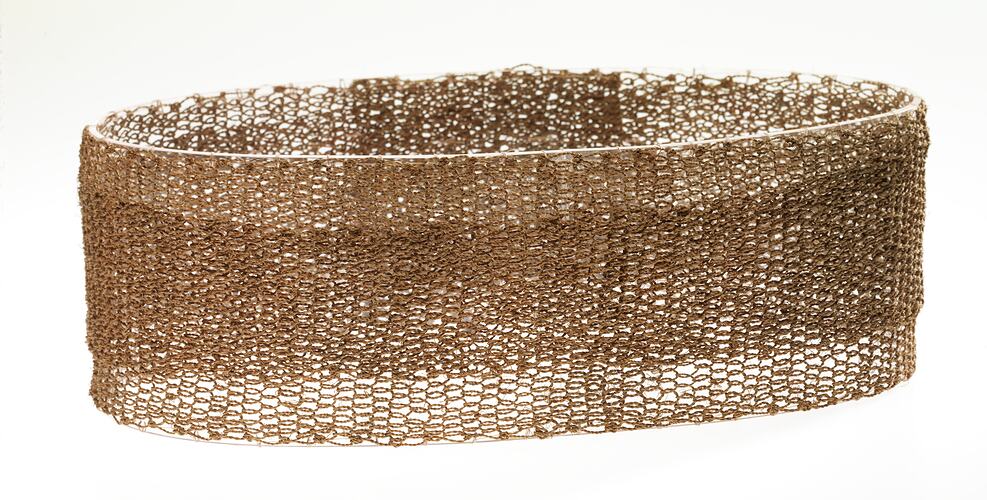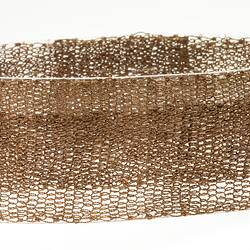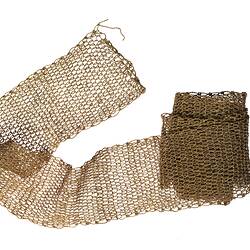Summary
Men would wear the ni-yeerd as a band around their waist to carry their wan-nee (boomerang), axe or other tools and weapons. To make it, women would skilfully weave a fine mesh from the cumbungie plant, which grows on the banks of the Murray River. Nearly two metres in length, the ni-yeerd is extremely strong and elastic.
The maker of this ni-yeerd was not recorded at the time of acquisition. It was made some time before 1878 and was most likely from the Swan Hill region of the Lower Murray River which is the traditional lands of the Wemba Wemba peoples. There are many sites of cultural and historical significance which exemplify the Wemba Wemba people's presence in the area for many thousands of generations, including campsites, middens, surface scatters of stone artefacts and burial sites. Today, the Wemba Wemba people hunt, fish, live work and celebrate their culture on their traditional lands. The Wemba Wemba peoples continue to play an important role as custodians of Country, especially through their active involvement in matters of cultural heritage at the many important sites of occupation on their lands.
Local Name
Ni-yeerd
Physical Description
A wide woven belt made from plant fibre using a simple loop stitch.
Significance
As a young boy Yorta Yorta/Ngarrindjeri/Wathaurong Elder David Tournier would collect the cumbungie plant for his mother and female relatives and explains;
'The cumbungie plant has got green leaves and a shaft that grows out of the middle of the plant. On that shaft is a clump of seeds, but it's the part under the water that this fibre comes from. The string is made from the processed root of the cumbungie plant. The roots were collected, cleaned and then either boiled or cooked in the ashes or eaten raw. November, if you want to eat it raw, was the best time to have it because it was nice and sweet. But you don't swallow the fibres, because you'd choke. So you'd just chew, chew, chew; it was like a chewie. But the actual flavour, though, is exactly the same as potato that you have today. It's good, it's all the starch, and it leaves a nice flavour. You'd spit the fibres out and the women would come around later, after everyone had had some, and they'd collect these fibres, wash them and then proceed to spin it on their legs and make string, They would make belts like that. You can see the very fine fibres. It would have taken a lot of these fibres to make this string for the belt, and was probably a couple of days' work. A belt this long would require at least 20 metres of string.' Uncle David Tournier 2013.
In honour of Uncle David Tournier 1955-2016. Esteemed Elder, Yulendj Member and Honorary Associate of Museums Victoria.
More Information
-
Object/Medium
Belt
-
Maker
-
Locality
-
Date Produced
-
Collector
-
Date Collected
-
Object Measurements
900 mm (Length), 150 mm (Width), 35 mm (Height)
-
Classification
-
Date Made
-
Maker
-
Clan/Language Group
-
Place Made
-
Indigenous Region
-
Keywords
-
Type of item
-
Discipline
-
Category
-
Collecting Areas


